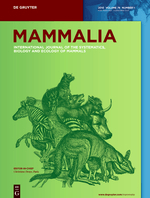
MAMMALIA
Scope & Guideline
Pioneering research in ecology and evolution.
Introduction
Aims and Scopes
- Mammalian Ecology and Behavior:
Research exploring the ecological roles, behavior, and conservation status of mammalian species across diverse habitats, including urban, rural, and protected areas. - Taxonomy and Systematics:
Studies focusing on the classification, identification, and evolutionary relationships of mammals, often revealing new species or revising existing classifications based on morphological and genetic data. - Conservation Biology:
Investigations into the threats faced by mammalian species, including habitat loss, climate change, and human-wildlife conflict, alongside strategies for conservation and management. - Physiology and Morphology:
Research on the physiological adaptations of mammals to their environments, including studies on morphology, reproductive strategies, and health assessments. - Human-Wildlife Interactions:
Exploration of the interactions between humans and mammals, including impacts of urbanization, hunting, and agriculture on mammalian populations.
Trending and Emerging
- Impact of Climate Change:
An increasing number of studies are focusing on how climate change is affecting mammalian distributions, behaviors, and ecological interactions, highlighting the urgency of understanding these impacts. - Urban Ecology and Wildlife:
Research examining how mammals adapt to urban environments and the consequences of urbanization on their populations and behaviors is gaining traction. - Genetic and Molecular Studies:
There is a growing emphasis on genetic research, including population genetics and phylogenetic studies, which are providing new insights into mammalian diversity and conservation. - Invasive Species and Their Impact:
The journal is increasingly publishing studies that investigate the effects of invasive mammalian species on native ecosystems, reflecting a global concern for biodiversity preservation. - Citizen Science Contributions:
Papers utilizing data collected through citizen science initiatives are emerging, showcasing the value of public engagement in mammalian research and conservation efforts.
Declining or Waning
- Traditional Habitat Studies:
Research that solely focuses on traditional habitat assessments without integrating modern techniques such as remote sensing or genetic studies appears to be less frequent. - Basic Descriptive Studies:
There seems to be a reduction in papers that provide basic descriptive accounts of species without exploring broader ecological or conservation implications. - Studies on Common Species:
Research focusing on common or widespread mammal species is becoming less frequent, possibly as researchers shift their attention to more endangered or less studied species.
Similar Journals

RUSSIAN JOURNAL OF HERPETOLOGY
Illuminating the Evolutionary Pathways of Reptiles and AmphibiansRUSSIAN JOURNAL OF HERPETOLOGY is a prominent scholarly publication dedicated to the field of herpetology, focusing on the study of reptiles and amphibians. Published by FOLIUM PUBL CO in the Russian Federation, this journal aims to foster the exchange of knowledge and research in animal science, ecology, evolution, and behavior. With its ISSN 1026-2296 and a significant commitment to high-quality academic discourse, the journal maintains a respectable standing within the Q3 quartile in both Animal Science and Zoology, as well as in Ecology, Evolution, Behavior, and Systematics. This attributes to its Scopus rank among leading journals in related fields, enhancing its visibility and influence. Spanning from 2014 through 2024, it publishes rigorous research that explores the diversity, biology, and conservation of herpetofauna, making it a vital resource for researchers, professionals, and students alike who are invested in the ecological and evolutionary dynamics of these species.

ZOOLOGICHESKY ZHURNAL
Unveiling the mysteries of behavior and systematics in the animal kingdom.Zoologichesky Zhurnal, a prominent journal in the field of Ecology, Evolution, Behavior and Systematics, has been a vital publication since its inception in 1950. Published by MAIK Nauka-Interperiodica in the Russian Federation, this journal has established a notable reputation in disseminating scientific research and advancing knowledge in zoology. With its coverage spanning from 1950 to 2023, and a specific convergent focus during 1982-1983, this journal contributes significantly to the ecological and evolutionary sciences, even though it currently holds a Q4 classification in the 2023 category quartiles, indicating its niche positioning among peers. Researchers and students engaged in the study of biological sciences, particularly those interested in the dynamics of ecosystems, behavior of species, and evolutionary processes, will find valuable insights and original research articles within its pages. While access to this esteemed journal is not open, it remains an essential resource for those seeking to deepen their understanding of zoological sciences.
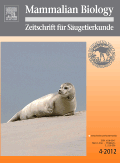
MAMMALIAN BIOLOGY
Fostering Knowledge in the Science of MammalsMammalian Biology is a premier peer-reviewed journal published by Springer Heidelberg, dedicated to the field of mammalogy and related disciplines. With an impressive impact factor and categorized within the top quartiles (Q1 and Q2) of Animal Science, Zoology, as well as Ecology, Evolution, Behavior, and Systematics, this journal serves as a vital platform for researchers and scholars to disseminate high-quality research findings. The journal’s open access options enhance visibility and accessibility, vital in today's collaborative research environment. Since its inception in 2001, Mammalian Biology has fostered a comprehensive understanding of mammal ecology, behavior, and conservation strategies, ensuring its significant contribution to the field. With a broad scope that encompasses evolutionary studies to ecological assessments, it promises to be an essential resource for professionals and students alike who aim to keep abreast of the latest advancements in mammalian studies. Located in Germany, the journal continues to thrive, adapting to emerging scientific inquiries and supporting the ongoing dialogue in mammalogy until at least 2024.
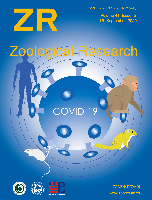
ZOOLOGICAL RESEARCH
Unveiling the Wonders of Zoology and EcologyZoological Research, published by Science Press, stands as a premier open-access journal in the fields of animal science, zoology, and ecology. Since its inception in 1980, it has fostered an inclusive platform for innovative research and dialogue within the scientific community, enabling researchers from across the globe to share their findings and insights. The journal's significant impact is underscored by its classification in the Q1 quartile across multiple categories, including Animal Science and Zoology, Ecology, and Nature Conservation for 2023, as well as its impressive rankings within Scopus, placing it in the top tier of its respective fields. Situated in Beijing, China, Zoological Research not only contributes to advancing knowledge but also emphasizes the critical importance of conservation practices in today’s rapidly changing ecosystems. With its commitment to open access, researchers, educators, and students alike benefit from immediate, unrestricted access to vital scientific information, making it an essential resource for anyone involved in the biological sciences.
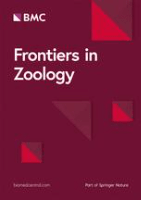
Frontiers in Zoology
Bridging disciplines to enhance our understanding of wildlife.Frontiers in Zoology is a premier, open-access journal published by BMC that has been a cornerstone of zoological research since its inception in 2004. With a commitment to advancing the field, this journal covers a broad spectrum of topics within Animal Science and Zoology, as well as Ecology, Evolution, Behavior, and Systematics. Recognized for its quality, it holds a distinguished Q1 ranking in both of these categories and ranks within the top percentiles in Scopus, with 87th and 78th percentiles, respectively. Based in the United Kingdom, it provides researchers, professionals, and students with innovative studies and findings that encourage interdisciplinary collaboration and exploration. The journal is dedicated to facilitating the open exchange of scientific knowledge, making it an essential resource for those seeking to stay at the forefront of zoological and ecological sciences.

CYBIUM
Fostering scientific dialogue in the realms of zoology and ecology.CYBIUM is a reputable journal published by the Société Française d'Ichtyologie, dedicated to advancing research within the fields of Animal Science and Zoology as well as Ecology, Evolution, Behavior and Systematics. With a commitment to fostering scientific dialogue, CYBIUM has been a valuable resource for scholars since its inception in 1996, reporting on a wide array of ichthyological studies and aquatic biology. The journal is recognized in the 2023 Scopus rankings with a notable position in the Q3 quartile for Animal Science and Zoology and Q4 for Ecology, Evolution, Behavior and Systematics, reflecting its growing influence in these disciplines. Although currently not categorized as Open Access, CYBIUM continues to provide essential insights into fish biology and ecology from the heart of France, the Museum national d'Histoire naturelle in Paris. Researchers, professionals, and students in related fields will find CYBIUM an indispensable tool for staying informed about the latest developments and research trends within ichthyology and marine sciences.
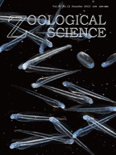
ZOOLOGICAL SCIENCE
Advancing the Frontiers of Animal ScienceZoological Science, published by the Zoological Society of Japan, is a leading journal dedicated to the fields of animal science and zoology. With its ISSN 0289-0003, this respected publication has established itself as a prominent source of scientific research, attaining a commendable Q2 ranking in the 2023 category of Animal Science and Zoology. Spanning over three decades, from 1992 to 2024, the journal offers a valuable platform for scholarly articles that explore various aspects of zoology, including ecology, behavior, and evolutionary biology. Although it operates under a traditional subscription model, its contributions are supported by a robust community of researchers and professionals who value its insights. The journal strives to foster academic discourse and insights that drive understanding and conservation of wildlife, making it an essential resource for students and established experts alike. The publishing headquarters located in Tokyo, Japan, further enhances its international reach and influence in zoological studies.

BMC Zoology
Pioneering research in conservation and ecology.BMC Zoology, published by BMC, is a distinguished open-access journal that has been advancing the field of zoological research since its inception in 2016. With an impressive Q2 ranking in both Animal Science and Zoology categories as of 2023, the journal occupies a significant position in the academic landscape, engaging a global readership dedicated to the exploration of animal biology. Based in the United Kingdom, BMC Zoology prides itself on providing a platform for innovative research, fostering collaboration among scientists, and facilitating access to high-quality scholarly articles. Researchers and practitioners in zoology can benefit from its extensive repository of articles that span various areas including conservation, ecology, and evolutionary biology. As an essential resource for scholars and students alike, BMC Zoology commits to enhancing the dissemination of knowledge in the zoological sciences through its open-access model, ensuring widespread access to cutting-edge research findings.

ACTA ZOOLOGICA BULGARICA
Innovative Insights into Animal Science and EcologyACTA ZOOLOGICA BULGARICA is a prominent academic journal dedicated to advancing knowledge in the fields of Animal Science, Zoology, Aquatic Science, Ecology, Evolution, Behavior, and Systematics. Published by the Institute of Zoology, Bulgarian Academy of Sciences, this journal serves as an invaluable platform for researchers, professionals, and students to disseminate their findings and engage with contemporary issues in biodiversity and ecology. With an established history since its convergence in 2010 and an ongoing publication schedule through to 2024, the journal holds a Q4 category ranking in multiple disciplines, highlighting its role in fostering scholarly communication in these areas despite its recent entry into Scopus-indexed rankings. Although currently not an open-access journal, ACTA ZOOLOGICA BULGARICA remains a key resource for those interested in the latest research and developments, particularly within the ecological and zoological landscapes of Europe and beyond.

JOURNAL OF MAMMALIAN EVOLUTION
Exploring Evolutionary Pathways of MammalsJOURNAL OF MAMMALIAN EVOLUTION, published by SPRINGER, stands at the forefront of the field of mammalian evolutionary research since its inception in 1993. Renowned for its scholarly rigor, this journal covers an extensive range of topics within ecology, evolution, behavior, and systematics, achieving a prestigious Q1 rank in its category, according to the latest metrics. With an ISSN of 1064-7554 and E-ISSN of 1573-7055, it offers critical insights into the diverse adaptations and evolutionary processes of mammals, making it an invaluable resource for researchers, professionals, and students alike. The journal maintains a significant impact factor, reflecting its relevance in shaping current discourse and discoveries within the biological sciences, particularly in mammalogy. Access to its rich repository of articles aids in fostering scientific collaborations and advancing knowledge in the evolutionary sciences, thus solidifying its role as a critical platform for cutting-edge research.